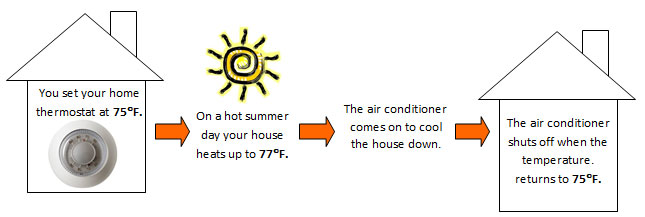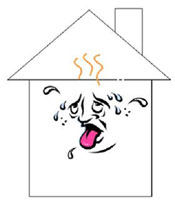Some jobs that the human body performs are easy to see. For example, when you run or text on your cell phone you can see your body at work.

Some jobs that the human body performs are easy to see. For example, when you run or text on your cell phone you can see your body at work. |
 |
Behind the scenes, your body's systems are working constantly to do something that is difficult to see, for example, maintain a controlled, stable internal environment. This stable environment is called homeostasis.
If you break down the word "homeostasis," you can figure out what it means.
Homeo (same) |
+ | Statis (standing still) | = |
Homeostatis (maintaining a constant environment) |
One way to understand homeostasis is to look at a nonliving example that automatically keeps conditions within a certain range, like a home air conditioning system.

Temperatures: 75°F (24°C), 77°F (25°C)
|
The air conditioner comes on and off to maintain the target temperature of 75°F (24°C) that was set on the thermostat. If the air conditioner never came on, your house would get too hot. |  |
|
Homeostasis is a balancing act. |  |
When an organism maintains homeostasis it is maintaining equilibrium or balance within itself. Daily activities such as, drinking, eating, and dressing are all examples of homeostasis.
Feedback loops are used to maintain a stable internal environment. There are two types of feedback loops: positive feedback loops and negative feedback loops.
Sources for these Images used for the section above as they appear, top to bottom: